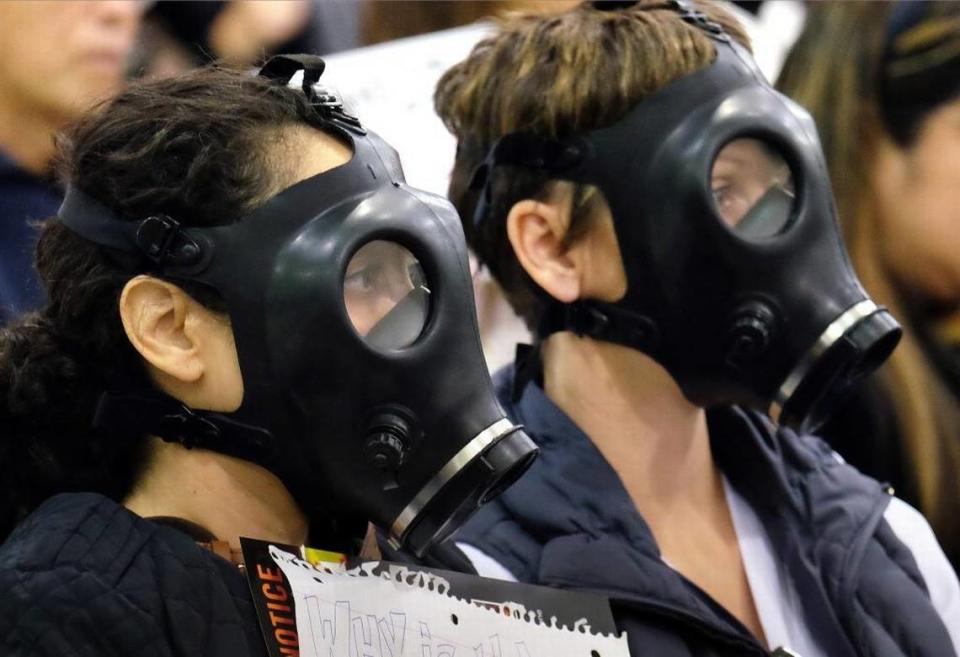COVID is over. There is no excuse for California’s top officials to dodge us | Opinion
Now that the COVID pandemic is over, there is no reason for elected officials — including school boards, city councils and boards of supervisors — to meet remotely.
Much as they may want to avoid the public in this era of culture wars, virtual meetings put more distance between elected officials and their constituents, making it harder for the public and the press to hold leaders accountable.
Most boards and commissions realize that, and have resumed in-person meetings, but there has been some talk of making teleconferencing a permanent option in local politics.
Assembly Bill 1379 would make it possible for local officials to continue fully virtual meetings indefinitely, requiring in-person meetings only twice a year.
Authored by Diane Papan, D-San Mateo, that bill is currently on hold. It should be permanently tabled and any similar efforts quickly squelched.
In-person meetings are a cornerstone of local politics, and exceptions should only be allowed in extraordinary circumstances.
State Senate bill would allow remote meetings for California officials
But what about statewide boards, which include everything from the high-profile Coastal Commission to the Board of Barbering and Cosmetology?
They are covered by the Bagley-Kenne Act, an open-meeting law that applies to state officials. It’s similar to the Brown Act, which covers local officials.
Both laws allow remote meetings, but require that teleconference locations used by officials be open to the public — which means board members who are logging on from home computers have to allow members of the public into their homes.
That requirement was suspended during COVID.
Sen. John Laird, D-Santa Cruz, the author of SB 544, is proposing to keep that suspension in effect, which has landed him on the wrong side of the media and other open-meeting advocates who warn that government will be forever changed if officials no longer have to meet face-to-face with the public.
The East Bay Times Editorial Board, for example, says Laird’s bill allows commissioners to “actually phone it in as they make decisions on everything from setting PG&E rates to protecting our coastline to disciplining bad cops.”
“Don’t let pols duck public meetings,” is the headline on a similar editorial in The Orange County Register.
Amendments aim to make the bill more palatable
In the face of so much pushback, Laird agreed to amend the bill in two important ways: It will sunset in two years and will require that 50% of meetings be held in person, with a majority of members present.
That’s a reasonable compromise — at least for some boards and commissions.
But important bodies like the Coastal Commission, the Public Utilities Commission, the Board of Education and others dealing with far-reaching issues should conduct of all their meetings in person. Period.

There is a case to be made for allowing teleconferencing for boards dealing with matters of limited interest to the general public.
Some examples: The Structural Pest Control Board. The Dental Hygiene Board. The California Acupuncture Board. The Speech-Language Pathology and Audiology and Hearing Aid Dispensers Board. And the board for barbers and cosmetologists.
These boards are important to people who work in those professions or have a special interest in their services, and they should have the opportunity to observe and participate in meetings. But that can be done through teleconferencing, which allows interested parties to stream meetings in real-time and offer public comments.
Is it really necessary for board members — who oftentimes come from throughout the state — to gather three or four times a year so they can meet in the same room to talk about pest control or barbering or acupuncture? That can mean a day or two of travel, meals and an overnight stay.
Allowing these groups to meet remotely at least 50% of the time would cut down on vehicle miles traveled — something the state has been pushing in an effort to reduce greenhouse gas emissions.
It also would save taxpayer dollars; last year, the State Bar saved approximately $1 million by teleconferencing, the Board of Optometry saved $28,000, and the Board of Pharmacy saved $35,000.
More diversity on boards?
Laird says there’s another advantage to allowing remote meetings: It removes a barrier for people who have difficulty traveling long distances — such as older people who no longer drive, or those who have a hard time getting away due to work or family responsibilities — and that could result in more diverse membership on boards.
Plus, there’s evidence that teleconferencing boosts participation. The state’s Little Hoover Commission — a bipartisan state agency that works on making state programs more efficient — found that teleconferencing during the pandemic resulted in more frequent meetings and better attendance by board members. There also was greater public participation.
We support a relaxation of rules for boards dealing with professional standards, training and licensing.
But when it comes to the state Coastal Commission, the CPUC, the Water Resources Control Board or any other agency dealing with broad issues of statewide concern, opponents of SB 544 have it right: Those officials should not be allowed to “phone it in.”
We strongly urge lawmakers to insist on that before passing any legislation.

